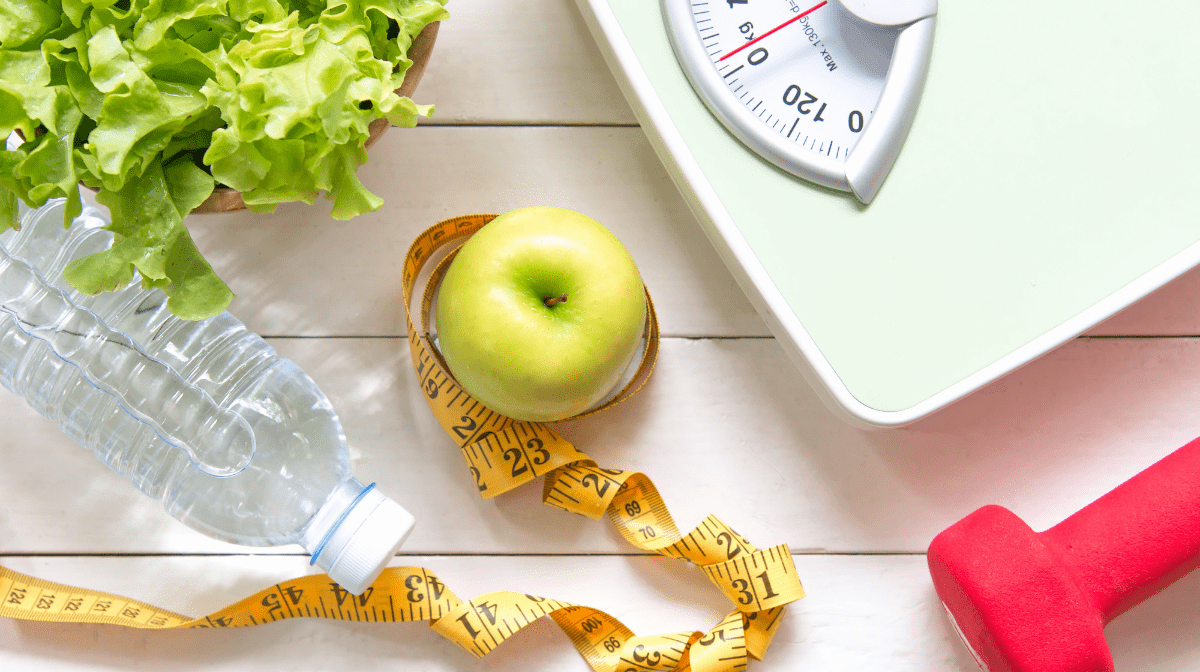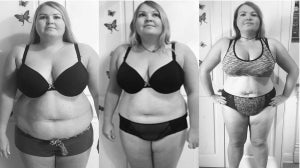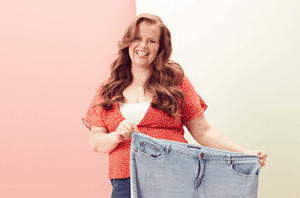
Emma Jones is a UK registered dietitian. Here, she breaks down what a Very Low Calorie Diet (VLCD) is, potential side effects, the positive impact they can have on type 2 diabetes and how to get started. Keep reading to find out everything Emma thinks you need to know before starting a VLCD like the exante 800 plan!

This blog post is written by Dietitian Emma Jones
What to think about when starting a VLCD.
A very low-calorie diet (VLCD) plan can be an effective way of losing weight quickly. You might want to lose weight for health reasons, for self-confidence or any other reason, and a VLCD could be your step to success*.
Sign me up… what should I think about?
Following a VLCD is a totally different way of eating compared to usual. Men and women need approximately 2000 to 2500kcal per day to maintain their weight, and so reducing calorie intake down to 800kcal a day is a really big change. VLCDs aren’t new, but we’re learning more about how they work and other long-term benefits to using this diet for the short-term.
Are VLCDs safe?
The foods we eat don’t only provide our body with calories, we eat and drink essential nutrients like protein, fibre, vitamins, minerals and fats to help keep our body ticking over and doing its amazing work, like fuelling our incredible immune system, keeping our gut healthy and our hearts beating.
The European Food Safety Authority (EFSA)** published guidance in 2015 about what a VLCD should contain as a minimum to make sure that it’s safe.
Energy: 600kcal
Protein: 75g/day
Carbohydrate: 30g/day
Achieving an 800kcal VLCD can be done with everyday foods (when including low fat meat and fish), but takes a lot of planning and precision, particularly when weighing out portions. Some people might prefer the element of normality and the possibility of more variety, but many find the temptation around food too hard to resist, and too difficult to get the nutritional balance right, and so choose to have meal replacements instead.
Other benefits of meal replacements include:
Being easy and convenient
Not requiring complicated tracking apps to determine calories
Challenging your eating habits and attitudes towards food
Being nutrient dense (exante meal replacements contain 27 vitamins and minerals, as well high levels of protein and fibre)
Following the exante 800 VLCD plan gives you the best of both. It gives you flexibility to use the exante products like the Salted Caramel Shakes and Chocolate Fudge Bar, or other high-protein, low-calorie foods alongside the meal replacements to fit into your day.
The protein in the meal replacements means that your body is getting what it needs to maintain your muscle mass, and the bars, shakes and breakfasts are packed with 27 vitamins and minerals, including vitamin C, calcium and iron, so you don’t have to worry about topping up with a multivitamin. There’s even a Vegan Range which have just as much protein and all of your iron, calcium, iodine and B12 included, which can be really challenging to get when eating a plant-based diet.
What about VLCDs and type 2 diabetes?
Being overweight can increase your risk of developing type 2 diabetes, and losing weight is one of the best things to do to help control your diabetes, and even put it into remission. A large study called the DIRECT Trial looked at whether people following a VLCD for 12 weeks could put their type 2 diabetes into remission. In 2019, the 2 year follow up results were published and showed that more than a third of participants were still in remission two years after their weight management programme, and the more weight you lose, the higher chance of being in remission at 2 years.
If you've got type 2 diabetes and want to make a change that could mean no more blood glucose medication and a healthier future, read more here and speak with your GP or diabetes team about which medication to stop, reduce or keep before getting started.
Any side effects of following a VLCD?
When making such a big change in what you’re eating and how you’re eating, you can expect that there could be some side effects. These can include hunger, constipation, headaches, fatigue, dizziness, cramps, dry mouth and hair thinning, but most of these are temporary whilst adapting to your new VLCD plan.
Despite these side effects, more than a million people have used exante products to change their life. Have a look at some of the inspirational success stories here.
Is it going to be difficult?
A VLCD isn’t likely to be the first diet you try and undoubtedly can be difficult. This is why planning is key to success. Think about these top tips below to ease you into your journey.
Think about when it suits you to start your plan. If you’ve got a holiday or celebration coming up soon which you’d rather not be on the VLCD plan for, think about a realistic start date so that you can give it your all, and won’t be tempted to go off track.
- Be prepared. Check out the range of products or try a 2 Week or 4 Week Diet Plan Box to get you a variety of shakes and bars to work out what you like and what fits into your day.
Talk. There is no shame in starting a VLCD and getting the support of a small number of family and friends can make a difference. You need people around you who will be support you along the way, not try to sabotage your efforts.
Know what to expect. The first few days of adapting can be the toughest. Your body is adapting to using ketones for energy (instead of food and stored carbohydrate) and this can take some time to adjust to. Fatigue is common 2-3 days into your VLCD plan, but the good news is that ketones can suppress appetite making the adjustment easier after these first few days.
How do I get started?
If you’re keen to start your VLCD, exante 2 Week and 4 Week Diet Box Plans have everything you need! Each box plan contains a variety of meal replacement shakes, bars and meals, and exante’s Official Facebook group is full of inspiring stories to help keep you on the right track!
*VLCDs are not suitable for people under 18, pregnant, breastfeeding, have an eating disorder, have liver disease, are undergoing active cancer treatment, porphyria, have type 1 diabetes or an eGFR<30
**Reference: https://efsa.onlinelibrary.wiley.com/doi/pdf/10.2903/j.efsa.2015.3957









